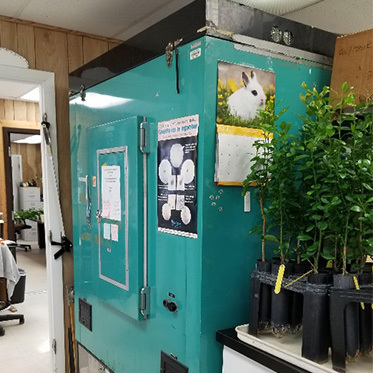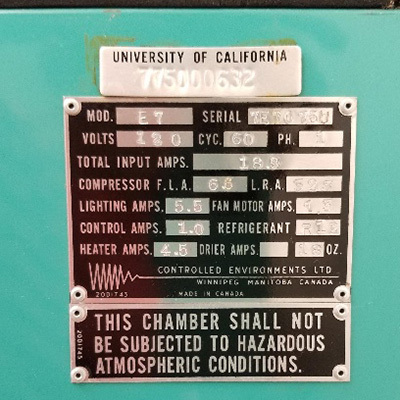Built to last – plant growth chambers in use at University of Florida for over 45 years
May 11, 2018
William O. Dawson, Eminent Scholar from the Citrus Research and Education Center at the University of Florida, shared in an interview with Conviron on how chambers purchased 45 years ago are still a key element to the research he has been conducting throughout the years.
In 1973, as an Assistant Professor at the Department of Plant Pathology of the Riverside campus of the University of California, Dr. Dawson participated in the challenge of looking for a plant growth chamber to help with their research efforts. From all the alternatives, there was only one manufacturer that provided a cost-effective option with mechanical engineering “designed like a Swiss clock” -Dr. Dawson considers this attribute could be one of the reasons why the chambers have performed so well for so many years.


Traveled from Coast to Coast
In 1992, Dr. Dawson moved to Florida to continue with his research at the Citrus Research and Education Center at the University of Florida despite being faced with leaving behind the Conviron manufactured chambers he found were essential for his research. Rather than purchasing new chambers for his research, he made an offer to the University of California for the 20-year-old chambers, raised the necessary funds to purchase them, and moved them across the country to his research facility in Florida.
Leading Research to Protect Citrus
The emphasis of the program Dr. Dawson leads at the University of Florida consists of doing laboratory work around the molecular genetics of virus-host interactions and methods to control diseases caused by Citrus tristeza virus (CTV). They have developed CTV into a tool to help find methods to control citrus canker and greening (Citrus Research and Education Center, 2018). The Citrus tristeza virus is one of the “most economically important virus disease of citrus in the world” (Lee, 2015); it has killed more than 50 million trees on sour orange rootstock. This complex disorder is made from different and distinct diseases which are transmitted by aphids that penetrate the phloem to feed on the sap.
Over the years, the Citrus Research and Education Center acquired additional chambers with higher light intensity, but their original chambers are still an essential tool in their research process. For example, to remove virus from infected plants, the chambers are programmed to run at high temperatures for 4-hour periods. Part of the research also uses the chambers to help understand how virus multiplies in different environments and conditions in plants such as tobacco or citrus.
Durable Beyond Expectation
Dr. Dawson has been more than satisfied with the durability of the chambers. He recalled one story that happened in the last five years when he sent an original, non-working controller box back to Conviron. He remembers being told by the service experts in Winnipeg that there was no replacement part for the 40-year-old component, however everyone was impressed to hear about a piece of hardware that had been in field service for so many years.

References:
- Dawson, William. Telephone interview. 19 April 2018.
- Citrus Research and Education Center, Program Emphasis, 2018, http://www.crec.ifas.ufl.edu/a...
- Richard F. Lee, Control of Plant Virus Diseases, Advances in Virus Research, Science Direct 2015, https://www.sciencedirect.com/...
- Zeki Berk, Diseases and pests, Citrus Fruit Processing, Science Direct 2016, https://www.sciencedirect.com/...
- Images courtesy of Dr. William Dawson

